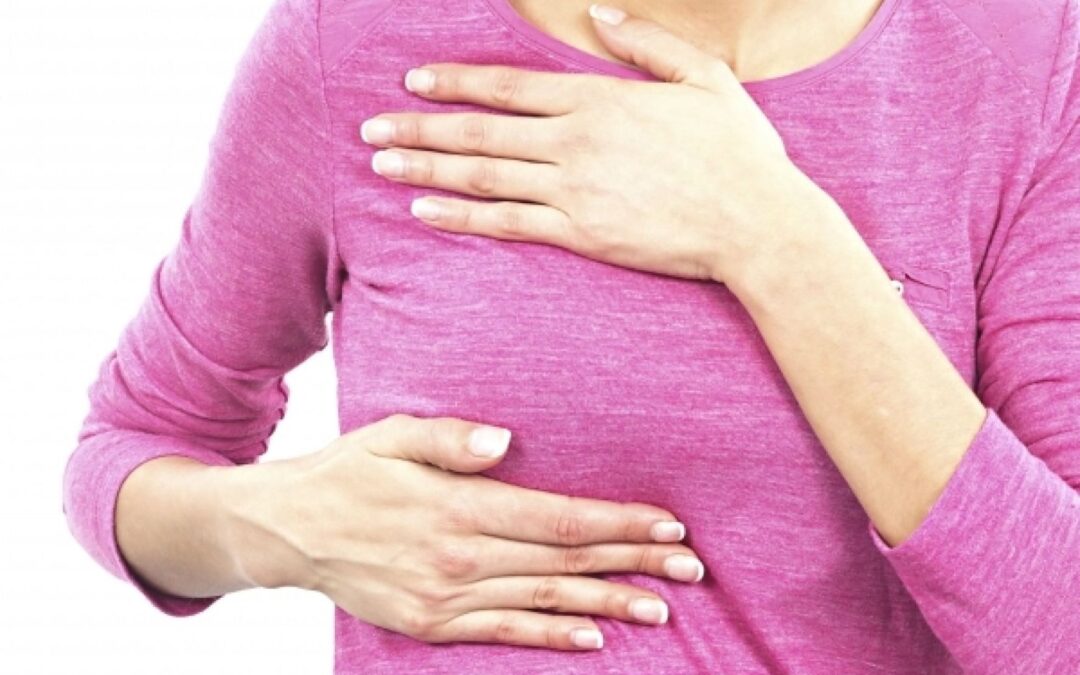If you are familiar with the way your breasts look and feel, it will make it easier to notice if any changes occur. From your 20s onwards, do the following checks once a month.
It’s best to do a week after your menstrual period ends….then you will be less likely to experience monthly breast tenderness, swelling etc. For those no longer menstruating, then maybe do it the first day of the month!
What to do FIRST:
- Stand in front of a mirror with your hands on your hips and shoulders straight. Look at the shape, colour and size of your breasts and nipples.
- Next, while still looking in the mirror, raise your arms in the air and look for the same things – shape, colour and size of your breasts and nipples.
Why:
A visual check of your breasts will help you to see:
- the contours of your breasts
- any changes to their usual shape and colour
- any discharge from the nipple
- any redness, rash or swelling.
What to do Next:
Feel your breasts while you are under the shower.
Why
This is personal choice, but some women prefer to feel their breasts when they are wet and slippery as it helps them to notice any changes.
Then
Feel your breasts while lying down with your arm bent at the elbow and resting above your head. Stretch your hands so your palms and fingers are flat like a plate – this will allow you to feel without poking your breasts.
Make sure you feel the entire breast area from your collarbone to your tummy, and include your armpits.
Why
This will allow you to feel without poking your breasts. It is another helpful way to look for:
- lumps
- areas that are painful
- skin that is:
- dimpled
- flattened
- different from before.
If you detect a new lump, don’t panic. Research shows that 9 in 10 breast lumps are not cancer.
When to see your doctor
You should see your doctor about:
- new lumps
- new lumpiness
- changes in the shape of your breast
- changes in the colour of your breast
- changes in the nipple
- discharge from your nipple
- puckering or dimpling of breast skin
- any persistent breast pain
- any persistent nipple or breast itching or rash.
Your doctor may suggest a mammogram to check any possible concerns, or you may be having regular mammograms as part of your health checks. Please continue to do self checks regularly to know what your breasts are like so you can pick up any early changes ASAP.
If you’d like some more info then please check out these website:

